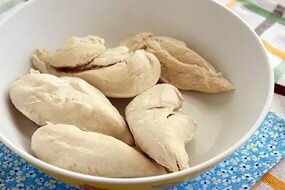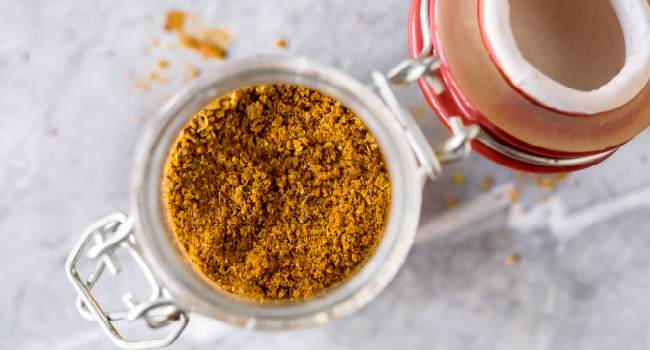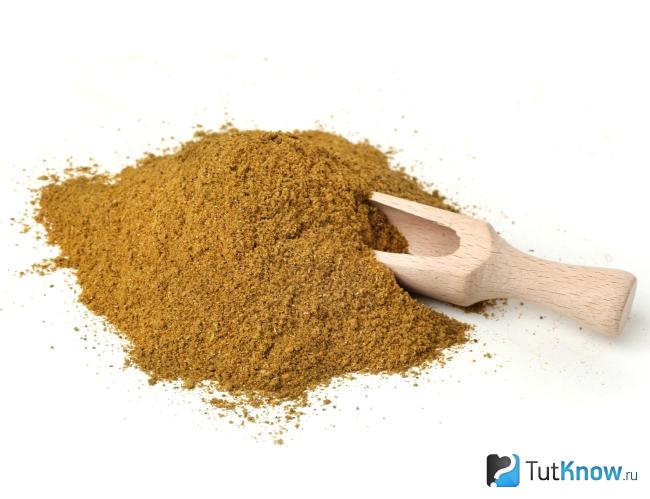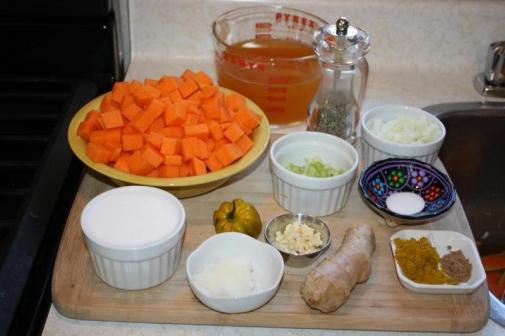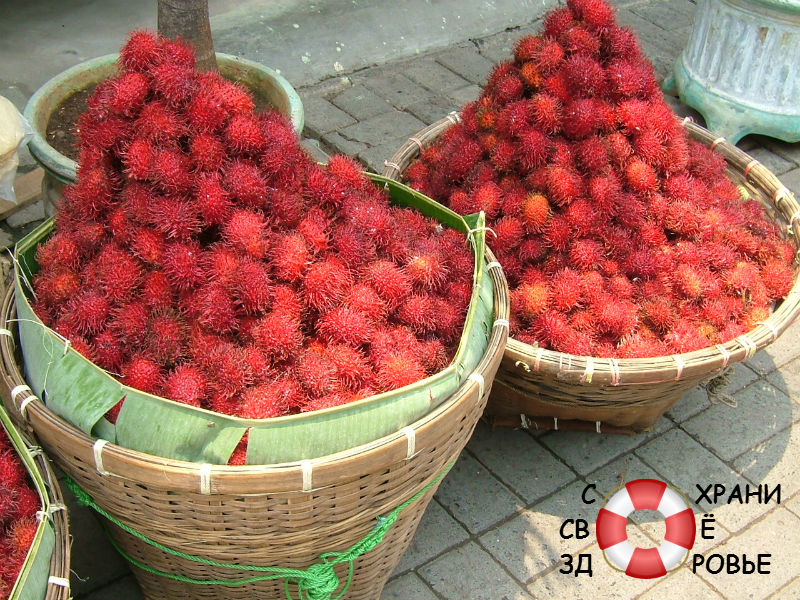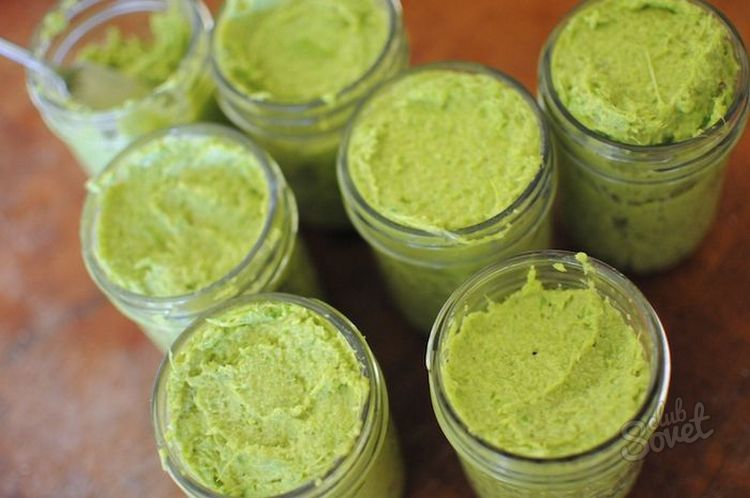Features of natural flavors. Identical Natural Flavors
Food flavorings - substances that are used in the confectionery business. Their main purpose is to enhance the aroma and taste of the cooked dish. The variety of food flavorings is huge, there are probably no restrictions. Homemade cakes can add absolutely any flavor.
What are flavorings?
Food flavorings are substances or preparations that are a food supplement. They are added in order to give or enhance the taste and aroma of baking. We are not talking about salty, sweet, spicy and other tastes, flavorings do not possess such properties. But the smell of berries, fruits, chocolate, etc. can be strengthened in baking.
Flavors can be artificially created or based on a natural product.
The harm and benefits of food flavorings
The scope of use of food additives is mainly gastronomic, therefore there should not be any harmful effect on them. But is it?
Food colors and flavors, depending on their composition and manufacturing method, can be beneficial as well as harmful.
Useful properties include the following:
- Enhancing aroma and taste.
- Saving products: instead of adding a lot of fruit to the cake for taste and smell, you can do with a small amount of food flavoring.
As for the harm from the supplement, it can be like this:
- Strengthening the appetite of a flavor. And this, in turn, will provoke eating a large number of high-calorie foods.
- Allergic intolerance to any kind of flavor.
- The composition of such substances may contain hazardous components that can cause various modifications in the body.
Food flavorings in most cases do not carry serious danger. But artificially obtained should be treated with caution.

Varieties of Dietary Supplement
There are several types of food flavorings:
- Natural, in the manufacture of which only natural components are used.
- Artificial - synthetically derived ingredients are used to create them, and the presence of a share of natural components is also possible.
- Identical to natural - in the composition of such flavors are substances artificially obtained, but whose chemical formula completely repeats the formula of natural substances.
1. By scope of use:
- confectionery
- for making drinks;
- oil and fat;
- gastronomic.
2. The state of aggregation:
- liquid food flavorings;
- powdery;
- in the form of an emulsion.
3. Method of preparation:
- smoking;
- technological;
- compositional.

Application
Food additives - flavorings - are used in the gastronomic industry to give the finished product a more appetizing, attractive look and taste. Thanks to this development of man it becomes possible:
- To diversify the assortment of products of the same type thanks to various flavoring agents. For example, a selection of cakes with a wide variety of tastes.
- Partially or even completely return the taste lost by the product (lost during long-term storage, freezing, preservation, etc.).
- To bring to the standard the taste and aromatic characteristics of gastronomic products that are not dependent on annual interruptions in the quality of the original agricultural raw materials.
- Strengthen the aroma and taste already in the food product.
- To kill or completely remove the unpleasant natural taste.
- To give an inexhaustible aroma to food that loses its odors in certain types of processing (thermal, for example).
- Add flavor to products that do not have their own odors, but are very useful in other ways.

They use food flavorings in the confectionery business, dairy production, in the manufacture of drinks, etc. Their quantity in the product must correspond to the norm of smells that the added amount of the corresponding natural ingredients exudes. With an overestimated amount of flavorings, not only does the taste deteriorate, the product is questioned about the quality and naturalness.
Production
Liquid food flavorings are made from the required amount of aromatic components dissolved in 1,2-propylene glycol, ethanol, triacetin, etc. After that, the finished solution is filtered.
Liquid flavored emulsions are produced by emulsifying aromatic ingredients in water with the addition of special substances and using special equipment.
Natural food flavors are produced by applying flavored substances to a suitable powder carrier (e.g., salt, sugar, starch). The process is accompanied by thorough mixing.
The listed methods are applicable for oxidation resistant flavors. There is a more complicated method of preparation - encapsulation.
The best, but at the same time the most expensive way is to obtain an emulsion of aromatic substances in a solution of an encapsulated agent (acacia resin, for example).
Technological liquid, dry and powdery food flavorings are made according to a special Maillard reaction. Its meaning is the interaction of amino acids and sugars when heated.
Smoke food additives are produced by smoke adsorption by water. These smokes are used for smoking products.

Naturally identical flavoring substance is a flavoring substance identified in raw materials of plant or animal origin and obtained using chemical methods.
Flavor identical to natural - food flavoring, the aromatic component of which contains one or more identical natural flavors. It may also contain natural aromatic substances, technological (reaction) and smoke (smoke) flavorings.
Naturally identical substances contain chemical compounds identified (found) in raw materials of plant or animal origin. They are obtained by chemical synthesis or isolation from natural raw materials. Along with identical, flavoring may contain natural ingredients.
Identical natural flavors include vanillin, raspberry ketone, ethyl acetate, amyl acetate, ethyl formate and others.
In Russia In accordance with GOST R52464-2005 Identical to natural flavoring is a food flavoring, the flavoring part of which contains one or more flavoring substances identical to natural ones, may contain flavoring preparations and natural flavoring substances. In other words, these are chemical compounds that are similar in composition to compounds in raw materials of plant or animal origin, but obtained by chemical synthesis, or isolated from raw materials by the chemical method. Naturally identical flavors may contain natural ingredients.
In the USA, and now in the European Union, the term "identical to natural flavoring" is not used.
Artificial Flavors
Artificial flavoring - food flavoring, the flavoring part of which contains one or more artificial flavoring substances, may contain flavoring preparations, natural and identical to natural flavoring substances. That is, it is an artificially synthesized chemical compound that has no analogues in nature.
Artificial flavoring - food flavoring, the aromatic component of which contains one or more artificial flavoring substances. It may also contain natural and naturally identical aromatic substances.
Artificial flavors include at least one artificial component - a compound that is not currently identified (not found) in plant and animal raw materials
In the European Union, the term “artificial flavor” is not used. The category "flavoring substances" mentioned in the European definition of food flavoring includes only the subcategory "natural flavoring substances".
American food law defines all flavors that do not fall within the definition of “natural” as artificial
A flavoring preparation is a mixture of flavoring and other substances isolated from raw materials of plant or animal origin, including those processed by traditional methods of cooking food using physical or biotechnological methods.
Artificial flavoring substance is a flavoring substance obtained by chemical synthesis methods that is not identified in raw materials of plant or animal origin
Technological flavoring is an identical to natural flavoring, which is a mixture of substances obtained by the interaction of amino compounds and reducing sugars when heated
The flavor may additionally contain natural and natural identical components. They are produced by chemical synthesis. Food flavorings may consist of any individual flavoring substance of various organic nature or a mixture thereof. The taste and aroma of the finished product depend not only on added flavorings, flavor and aroma enhancers - it is also the result of the action of a large number of compounds contained in the raw materials and formed during the process.
The main sources of aromatic substances can be essential oils, aromatic substances, extracts and infusions; natural fruit and vegetable juices, including liquid, pasty and dry concentrates; spices and products of their processing; chemical and microbiological synthesis.
Flavors are available in the form of liquid solutions and emulsions, dry or pasty products. Substances and compounds of this type, like all other food additives, must comply with hygiene standards. Their use must necessarily be controlled in the finished product and indicated to the consumer on the individual packaging of the product. The use of flavorings in specific food products is regulated by technical documentation (TU, TI)
flavoring taste microbiological hygienic
We all love to eat tasty food, so when choosing food products we often give preference to their taste qualities. At the same time, we do not think about what exactly provides the rich taste and aroma of certain products. Why, for example, does sausage cooked at home by its own means significantly inferior to the taste of those products that fill the shelves of shops and markets? The answer to this question is quite simple: the modern food industry uses a huge number of various additives in the production, designed to enhance the taste, long-term storage of products, increase their density, etc. Flavors are one of the most popular such additives, used almost everywhere. MedAboutMe will tell you what food flavorings are and whether they pose any health hazard.
Food flavoring is a special additive that saturates a product with one or another new taste or enhances an existing one. Fresh products have their own pronounced natural taste and aroma, which is lost in the process of their industrial processing. It is to replenish the taste of the products such special substances are used. However, as they say, flavorings are different. Today, there are various types of food additives that differ in scope, cost, production technology and the level of harm to human health, eating them regularly.
The generally accepted classification of food flavorings suggests dividing them into “natural”, “identical to natural” and “artificial”. Let's consider each of them in more detail:
- Based on the name, natural flavors should be made from natural raw materials by physically acting on it. But the interpretation of this definition, as they say, has its own “wind correction”. If in the EU countries this type of food additives is obtained by pressing, distillation or extraction of natural raw materials, in Russia natural flavorings are a combination of substances obtained from natural raw materials and a special flavoring preparation.
- Flavors identical to natural - substances that have the same composition as natural additives, but not obtained physically, but in the laboratory. Flavorists are engaged in their development. For example, to get cranberry flavor identical to natural, experts use orange, beech and lavender oil. The result is a natural flavor, in its properties identical to the selected analogue, but having nothing to do with it.
- Artificial flavors are additives that are flavor compounds obtained in laboratory conditions. As a rule, the tastes and aromas of products prepared using such substances have no analogues in nature.
Already from the above definitions, it becomes clear that only those food additives that are obtained from natural raw materials can be absolutely safe for human health. For example, a natural onion flavor can be produced by evaporation (distillation) of juice squeezed from a vegetable, and strawberry flavor is made by pressing fresh berries. Such additives are not harmful, but also not beneficial for the food industry. If for food producers the use of identical natural and artificial flavors is more profitable, is this not dangerous for the health of consumers?
The harm of identical natural flavors and artificial health additives is the cause of endless disputes between chemists and doctors. The latter argue that you can not immediately feel the harm done to the body by such nutritional supplements. Most of the products that we eat daily have fragrances, it is almost impossible to avoid their entry into the body. Over the years, indirect signs of the influence of flavorings begin to be observed. According to some scientists, these include:
- increase in the number of obese children and adults;
- increased incidence of chronic fatigue syndrome and depression;
- an increase in the number of children diagnosed with autism;
- lowering the average age for Alzheimer's disease, etc.
It is worth noting that flavorings are the only food supplement the composition of which the ordinary consumer cannot figure out. So, flavors identical to natural ones can contain many harmful chemicals. For example, they often use ethyl acetate, amyl acetate and ethyl formate, which disrupt liver function, accumulate in the body and cause chronic fatigue syndrome.
Synthetic flavors pose a particular health hazard. For example, a pure bacon flavor component such as guaiacol in its pure form can cause acute intoxication even when a small amount is consumed.
- Fragrances, more complex in composition, allow foods to evoke a feeling of fullness in a person much faster. This conclusion was made by Dutch scientists. To do this, a study was conducted in which a group of volunteers was offered to eat two different strawberry yoghurt. In one yogurt, a simple one-component flavor was used to give the strawberry flavor, and in the second, a substance consisting of 15 components at once. It was the second yogurt that caused a feeling of satiety in a person much faster.
- American scientists have found that diacetyl, which is part of many food flavorings, enhances the negative effect of beta-amyloid protein associated with the development of Alzheimer's disease. Diacetyl is able to cross the blood-brain barrier. In addition, this substance interferes with the work of glyoxalase-I-protein, which protects nerve cells.
- Researchers at the University of Burgundy concluded that the smell of fresh pears helps people cope with their harmful taste preferences. The most effective such method turned out to be when choosing desserts. So, according to scientists, the smell of fresh pears can stimulate even an inveterate sweet tooth to give preference to a healthy fruit dessert.
Food flavoringsare very popular types of food additives and are mainly used in fast food restaurants, in the production of meat products, sausages, desserts, instant soups and other convenience foods.
Fresh food has a pronounced taste and aroma. In the process of industrial processing and storage, taste and aroma is lost or undergoes major changes. To return the lost taste to the products, flavor and aroma enhancers ( flavorings) containing nucleotides - substances that stimulate taste buds. Penetrating rapidly into the brain, these substances enhance palatability. Some substances used as flavorings can cause various diseases. Typically, flavor enhancers and flavors are mixtures of different substances, due to which there is practically no way to determine whether this food supplement is harmful or not. Additional hazard flavoringsin that they can completely mask the taste and smell of poor-quality products (for example, the smell of rotten meat or fish).
Food flavorings
Designation of food flavorings and flavor enhancers:
Amplifiers of taste are designated by the letters E 620 - E 637.
Food flavorings they do not have separate names and are not indicated by the letters E. The packaging usually simply indicates that the product contains flavors.
Food flavoring classification:
1. Natural food flavorings.
The term "natural flavoring" in different countries has a different meaning. Unfortunately, in Russia, the term “natural flavor” means that the shock absorber “contains one or more flavoring preparations and / or one or more natural flavoring substances”. Thus, “natural flavor” does not mean “harmless” at all. But there are also food flavorings that are entirely composed of natural substances. These are truly harmless natural flavors.
2. Food flavorings identical to natural ones.
Identical to a natural flavoring agent contains one or more artificially obtained chemical compounds that are similar in composition to flavoring substances of vegetable or animal origin.
3. Artificial food flavorings.
Artificial food flavors contain flavoring chemical compounds that have no analogues in nature.
Diseases caused by flavor enhancers and flavors:
The most popular flavor enhancer is monosodium glutamate (E 621). This food supplement enhances the sensitivity of taste buds. Monosodium glutamate can cause headaches, drowsiness, palpitations, fever, muscle weakness, allergies, and decreased vision. In children, this dietary supplement causes irreversible damage to vision and brain.
There are other equally dangerous flavor enhancers and flavorings. Some of them are little studied.
How to prevent the harm caused to health by food flavorings?
Pay attention to the composition of the food product indicated on the package and try to visit fast food restaurants less. If the package says that the product includes spices, but not specifically which ones, it can contain any food flavor enhancers and flavorings.
Try to exclude foods from the "black list" of popular foods with a high content from your diet. food flavorings.
What does coconut cookie consist of, which contain the identical Coconut flavoring? Is it true there coconut flakes or exclusively triacetin E1518, imitating the aroma of coconut? Where do aromatic food additives come from, where are they used and how harmless are they - we will understand.
Flavoring additives used to give the product a taste and aroma, enhance and restore the taste and aromatic properties lost during processing. They are also preservatives and that allow you to keep the product fit for a longer time, with a constant taste and smell.
These additives can give the strawberry flavor and smell an initially tasteless sweet soda or natural curd. However, it is impossible to use them to enhance the natural aroma of natural products - for example, to enhance the creamy-milk taste of cottage cheese or cheese, the aroma of orange in direct-pressed orange juice, etc. In addition, it is strictly forbidden to “mask” product defects with aromatic fillers.
The phrase " flavoring additives”Includes 3 categories of substances: flavors, essential oils and extracts.
Oleoresins and natural essential oils
Essential oils are volatile organic compounds that form the specific aroma of each plant. Of the more than two thousand plant species containing essential oils, 150-200 are the most valuable and sought-after in industry.
Essential oils can be obtained from leaves, flowers and seeds, stems, from roots and bark, as well as plant wood. The highest concentration of aromatic particles is achieved during the period when flowers and seeds appear.
Traditionally essential oils in the food industry obtained by extraction with water or steam distillation. The cold pressing method is still popular.
Oleoresins (food extracts), as well as essential oils, are well soluble in organic compounds such as, for example, vegetable fats, alcohols. Due to this, such a production method as extraction with solvents, which are subsequently removed, is popular.
The high solubility property is also actively used to preserve essential oils. Like volatile compounds, in the open air and in the light, ethers instantly oxidize and change their smell and color, and soon evaporate. They are stored as solutions with vegetable oils, which preserve the properties of esters for up to two days, provided that the lid is sealed and the temperature regime is maintained from 5 to 15 ° C.
Due to the presence of non-volatile compounds in the composition and greater stability, food extracts Spicy plants are the most popular. Taste properties such as pungency are not inherent in the ester of this plant.
Types of Food Flavors
Natural Food Flavors are extracts of plant and animal raw materials that are dried, pressed, distilled and subjected to other types of physical processing. They reflect the natural taste and smell of the source, but cannot be universally used in any food production. The restriction on the amount of natural resources, especially the extraction, storage and transportation, determines the high price of raw materials. In addition, the naturalness of the components indicates a low intensity and instability of the aromatic and taste properties of these substances.
For these reasons, the most common identical to natural flavors. Repeating the composition and chemical structure of naturals, the entire substance or several components, however, are obtained artificially. Their persistence and more intense aroma make them more convenient for industrial purposes, and the comparative cheapness is also more affordable.
In addition to the two listed, there is such a variety of compounds as artificial flavors. They include one or more synthetic components that are not present in nature. These flavors have an even more concentrated aroma, even more stability and lower price against identical natural ones.
Flavors can be classified:
- by appointment: for spicy and sweet.
- based on the production method: on composite (a mixture consisting of individual substances), smoke and reaction (or technological, obtained as a result of the interaction of reducing sugars and amino compounds with increasing temperature, for example, the aroma of the finished food).
Flavoring agents are released and stored as powders and liquids, less commonly as pastes and emulsions. Carriers of liquid flavorings can be solutions of ethyl alcohol, propylene glycol, triacetin (E1518) and others. Powder flavors are also supplied with carriers, which may be starch and dextrin polysaccharide, gelatin, salt and sugar.
Regardless of the form of delivery, any flavoring alone cannot be used due to the strong concentration of taste and smell. Adding it to the product depends on the desired effect, production technology, type of final product and manufacturer's recommendations. The standard amount of liquid substance is calculated per 100 kg of the final product in the range of 50-150 g, for powdered additives - from 200 to 2000 g. For extracts and essential oils, an amount of 1-5 g is established.
For comparison, only 1-2 g of garlic essential oil have the same aromatic and flavoring effect as 1 kg of this product. Technological and commercial benefits identical to natural flavors before natural supplements is obvious.
The composition of flavoring additives
The uniqueness of the taste and aroma of each product is formed from hundreds of components included in it. They are affected by the place and climate of plant growth, fermentation, the method of processing and preparation. The main tone of the aroma is determined by one or more substances, while the remaining tens and hundreds of compounds complement it with individual notes and make it special. For example, the familiar citric aroma determines the citral compound, the smell of garlic is defined by allyldisulfide, vanilla is recognizable by notes of vanillin due to 4-hydroxy-3-methoxybenzaldehyde, etc.
Aromatic additives purchased on the market have a constant composition, which is collected bit by bit by the flavorist - a specialist in aromas.
However, in each company’s finished cherry jam, taste and aroma can vary greatly. One manufacturer will prefer to focus on the sweetness of the berry, another on the bitterness of the stone, and the third on the aroma of cherry flowers. One company cooks such a thick jam for so long that it costs a spoon and you need to chew it, while others - on the contrary, are more liquid, such that it is easily spread on toast and melts in your mouth. The first manufacturer pours the finished product into glass jars, the second into plastic, and the third prefers the tube to be applied directly to a sandwich or dessert without a spoon.
All this: the method of preparation, packaging, transportation, storage and even consumption (whether you eat cold jam on a sandwich, a bite with hot tea or bake it in cakes), personal preferences of technologists - affects the final version of the taste and aroma of the product.
What danger are aromatic additives? 
Despite the fact that essential oil is actively used in the food and pharmaceutical industries, it is a fairly toxic substance. It is forbidden to be taken orally in undiluted form, only as a component of products and medicines. Care should be taken to use incense sticks, candles, etc. containing essential oils. Incomplete combustion can lead to the formation of harmful compounds and even carcinogens. Excessive inhalation of essential oils can cause poisoning and burns of the respiratory tract. Essential oils must be handled especially carefully, as this can lead to a miscarriage.
Flavors per se at the doses in which they are present in the products are not a threat to.
For example, a dietary supplement sodium acetate E262 is a substance that is part of the cells of the body. It is used for the manufacture of canned vegetables, softening the taste of vinegar, for flavoring chips and as a preservative in flour and bakery products. The substance E262 is considered non-toxic, therefore, the maximum daily intake rate has not been established for it.
Maltol E636 - a flavor used in chocolate, drinks, cocoa, tea, coffee, sweets, is considered to be almost non-toxic. However, the average daily dose should not exceed 1400 mg / kg of body weight.
The consumption of these substances on a regular basis and in large quantities - now they are present in almost every product - can harm the body. It is proved that a high concentration in a long period of time negatively affects the liver and metabolic processes. The organism of children is especially sensitive to toxicity, therefore the use of additives is strictly prohibited.
Having noticed the indication of food flavoring in the composition of coconut cookies and not having seen a separate mention of the presence of coconut flakes, you should know that, most likely, coconut is simply absent there.
Sources:
- L.A. Kurakin, M.S. Mayurnikova. Nutritional and dietary supplements
- baker-group.net/frozen-food/630.html
- prodobavki.com/modules.php?name\u003darticles&article_id\u003d67
- dobavkam.net/additives/aromatizatory







